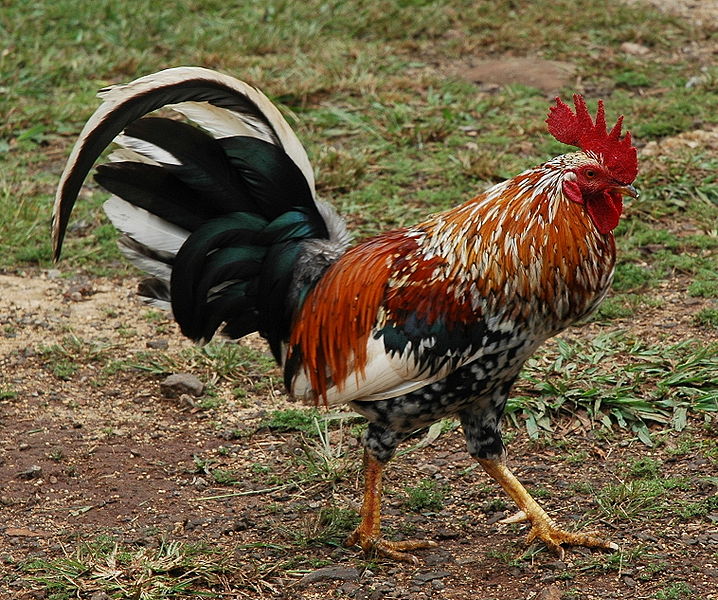
From Nature:
Opaekaa Falls, like much of Kauai, is teeming with feral chickens — free-ranging fowl related both to the domestic breeds that lay eggs or produce meat for supermarket shelves and to a more ancestral lineage imported to Hawaii hundreds of years ago.
…
The process of domestication has moulded animals and their genomes to thrive in human environments. Traits that ensure survival in the wild often give way to qualities that benefit humans, such as docility and fast growth. Feralization looks, on its surface, like domestication in reverse. But closer inspection suggests that the chickens of Kauai are evolving into something quite different from their wild predecessors, gaining some traits that reflect that past, but maintaining others that had been selected by humans. In this way, they are similar to other populations of animals, including dogs, pigs and sheep, that have broken free of captivity and flourished.
…
Their unpublished research has shown that the brains of domestic chickens are smaller than those of junglefowl, relative to their body size, and organized differently. The team hopes to identify the genes responsible for these changes and others, such as the diminished visual-processing systems of domestic birds. Life in the wild has also altered the reproductive systems of the feral chickens. Domestic breeds lay eggs almost daily, but breeding seasonally could allow feral chickens to reapportion the minerals devoted to eggs (which come from spongy tissue in the centre of their bones) to making their skeletons more robust. The researchers sample the hen’s femur and also find that its ovaries are empty of egg follicles, which could be a sign of seasonal breeding.More.
From the story, it’s not at all clear that any significant long-term changes have occurred between wild, tame, and wild again. One wonders if the posibility for all those changes was always in the genomes of the chickens.
One might call it an evolving door.
See also: New study: Dogs domesticated 33 000 years ago
Follow UD News at Twitter!